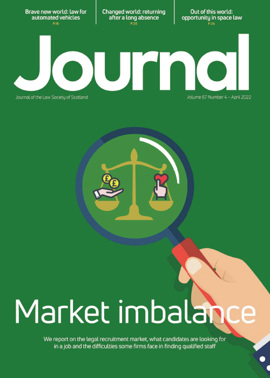Law into orbit

While technology billionaires grab headlines across the Atlantic in the commercial space race industry, attention is turning to the UK, which is on the cusp of a commercial space sector boom itself.
It is an oft-quoted fact that Glasgow produces more satellites than any other location outside California, USA. However satellites are only one part of a space ecosystem, and for the first time in more than 50 years, the UK is poised to create its own space ecosystem for end-to-end payload delivery services, with a focus on the space launch market.
The Black Arrow programme resulted in the UK’s first homegrown launch vehicle being launched from Australia in the early 70s, placing the (also British) Prospero satellite into orbit. But despite this success, the then UK Government cancelled its space programme and Black Arrow remains but a jewel in the crown of UK rocket enthusiasts.
Preparing for launch
Fast forward 50 years and the UK Government has announced its National Space Strategy, the Scottish Government has launched the Scotland Space Strategy and, after much consultation, the Space Industry Act 2018 has entered into force through the Space Industry Regulations 2021.
With a shift in the regulatory landscape and renewed interest from both UK and Scottish Governments, the UK is once again nearing the prospect of launch, and this time from UK soil.
Scotland itself is the focus of much of this sector activity, as it is home to five potential spaceports offering vertical or horizontal launch prospects. Skyrora and Orbex represent two privately held companies designing, manufacturing and testing launch vehicles at their respective facilities.
Scotland now has regulation and it now has industry making headway in the space race technology battle – so one must pose the question, is the road ahead a smooth one or are there other challenges awaiting?
Space regulation 2.0
Regulation of space is not new in the UK. The Outer Space Act 1986 and Air Navigation Order have historically governed launch activity of UK nationals and UK entities, subject to the location of launch, and subject to the proposed altitude.
Since the Space Industry Act and the Space Industry Regulations, however, there is a clear regulatory split, providing three main legal instruments relative to spaceflight activities within the UK, and outside the UK by UK entities or persons.
While the new legislation of 2018 and 2021 offers a starting point to regulate the UK launch industry, with the Civil Aviation Authority (CAA) appointed as regulator, time will tell whether this regulatory approach will suffice in practice. It is likely just the start – as the realities of industry will drive regulatory shifts in future.
For now, industry appreciates a clear process for obtaining spaceflight-related licences, whether that is a launch operator licence, spaceport licence or range operator licence under the new legislation. A great deal of industry effort has been made to build the knowledge of CAA to ready the regulator to analyse applications promptly, to ensure that the regulatory pace advances at the same pace as the technology readiness of UK space operators.
Without that pace match, industry will pause and others may be waiting in the wings to reap the rewards – whether that is other jurisdictions attracting UK launchers due to more efficient regulatory approaches, or non-UK launchers dismissing the UK as a launch market due to lack of pace in driving forward regulatory compliance in line with technical advancements.
American influence
It would be remiss not to discuss the American market and, indeed, the UK Government is well aware of this market. The prospect of cost savings using US rockets was a driving factor in the historic closure of the UK space programme in the 70s and, even as the UK braces itself for its space revolution, the Government has given another nod to the US, having entered into the UK/US Technology Safeguards Agreement.
The TSA facilitates US companies launching their vehicles from UK spaceports, while offering protections to US export-controlled technology, marking both countries’ commitments to non-proliferation.
The only difference between 2022 and the 1960s is that UK industry is answering the call and therefore there is not the same extent of reliance on US technology to enable the UK to achieve its dreams of returning to space.
Legal sectors
The space market will impact on a multitude of legal disciplines and, with many firms beginning to develop their “space sector” offerings, it will not be long before a space sector division is as common a sector focused practice group as construction, technology or renewables. Space touches on all core commercial legal disciplines under Scots and UK law. This article does not comment in depth on each, but some headlines for thought include:
Intellectual property
This may relate either to the uniquely patentable systems and subsystems of launch vehicles, or the design rights arising in the builds themselves. Given the international heritage of launch it remains to be seen whether such heritage and associated IP will be reinvented or simply enhanced, and thus typical protections may be limited. That said, the market is developing a number of inventive solutions due to modern manufacturing techniques and methodologies, and we may see a number of space originated technologies becoming protected inventions with applications outwith the sector offering space companies another route to commercialisation outside of traditional launch.
Personal injury
The risk to employees and the public from space related testing and actual launch activities is high (but capable of mitigation), and there is a nod to this from Government with the Spaceflight Activities (Investigations of Spaceflight Accidents) Regulations 2021, made to establish a spaceflight investigatory body for the conduct of accident investigations.
Commercial property
With a number of the proposed Scottish spaceports undergoing the planning processes, sourcing and leasing land in Scotland may be a challenge for operators. Space is an unknown industry in terms of noise, pollution, environmental impact and so on. This is an unknown that many commercial property owners may be willing to tread through, as such property owners will recognise the growing nature of the sector and the ultimate financial opportunity; but most of the Scottish land that is needed will likely be privately owned.
Cassandra Auld, partner at Weightmans LLP, who advised on the lease of Scotland’s first rocket engine test facility in Midlothian, commented: “One of the challenges renewables projects had (still have) is that the landlords don’t tend to be institutional investors/funds or the like but private landowners. I suspect this might also be a challenge for the space industry if areas like test sites and spaceports grow in numbers and size. The nature of the operation needs open land, and in Scotland open land tends to be owned by private landowners, which can lead to more challenging negotiations as they often have their own vested interests and objectives which can differ from commercial investors or funds who may be more likely just to do a commercial deal based on market opportunity.”
Drawing a comparison to an industry such as renewables offers an interesting point. One can look to other industries such as renewables, or construction generally, to gain an understanding of where the UK space legal landscape perhaps should end up.
Standardisation of contracts
Much like the construction industry, as the space sector grows it may develop a need for standardisation across its contractual basis. Launch service agreements are as yet untested in terms of UK launch, indemnities and liabilities etc. As suites of contracts are drafted and tested, in practice and in conversation with insurers, it is likely that a natural “norm” will evolve; but until such time, it will be for individual operators and payload providers to negotiate terms that balance the regulatory compliance aspects with the commercial risk sharing in what can only be regarded as high risk activities, with a need to carefully document allocation of such risk and liability, against a backdrop of indemnities and liabilities which still remain under Government consultation.
Dispute resolution
With contracts comes dispute resolution, again drawing paradigms to other industries that have developed their own alternative dispute resolution proceedings. It may well be that, as the sector grows in size and as risks are played out in practice, it will not be too long before a dedicated dispute resolution process is developed to enable disputes within the sector to be handled by experts, timeously, and in proportion to the risk and value of the project.
More than rocket science
It is clear that the legal landscape surrounding launch activity in the UK is vast, and at the beginnings of its regulatory journey. The regulations have not yet been fully tested and that in itself represents a challenge.
While the UK continues to invest in skills development and equipping the industry with the technical minds it needs to remain a competitive space sector leader, it is clear that the industry is more than just the rocket science behind the components – and one hopes that the regulator, and UK and Scottish Governments, will continue to push forward to allow the UK space sector to stand a chance in the global space race. Industry is ready – is the law?
Perspectives
Features
Briefings
- Criminal court: Thom bar still applies
- Licensing: tighter rules for the pet trade
- Insolvency: Transition from the COVID measures
- Tax: What did the Spring Statement bring?
- Immigration: Providing a home for Ukrainians
- Scottish Solicitors' Discipline Tribunal
- Property: RCI – what does it involve?
- In-house: Looking for a star







